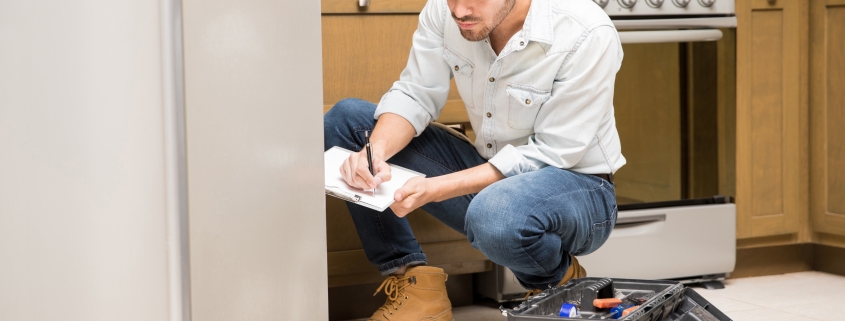Troubleshooting Common Refrigerator Problems: Keeping Your Cool
Your refrigerator is a vital appliance in your home, tirelessly working to keep your food fresh and your beverages cold. However, like all appliances, it can encounter problems from time to time. In this blog post, we’ll discuss some common refrigerator problems and provide troubleshooting steps to help you identify and possibly resolve these issues without the need for professional assistance.
1. Refrigerator Isn’t Cooling Properly:
Possible Causes:
– Dirty condenser coils.
– Blocked air vents.
– Damaged door gaskets.
– Temperature settings.
Troubleshooting Steps:
– Unplug the refrigerator and vacuum the condenser coils on the back or underneath. This improves cooling efficiency.
– Ensure the air vents inside the fridge and freezer are not obstructed by food items.
– Check the condition of the door gaskets. Replace if they are worn or damaged.
– Verify that the temperature settings are appropriately adjusted.
2. Leaking Water Inside or Outside the Fridge:
Possible Causes:
– Clogged defrost drain.
– Damaged or loose water supply line.
– Defective ice maker.
– Temperature settings.
Troubleshooting Steps:
– If water is pooling inside the fridge, inspect and clear the defrost drain, usually located at the back or bottom of the freezer.
– Check the water supply line for leaks or loose connections.
– Examine the ice maker for any visible issues. Replace the ice maker unit if necessary.
– Confirm that the refrigerator’s temperature settings are correctly set, as excess humidity can lead to condensation.
3. Unusual Noises:
Possible Causes:
– Noisy evaporator fan.
– Loose components.
– Clogged or frozen defrost drain.
Troubleshooting Steps:
– Locate the source of the noise, which may require removing the rear or bottom panel.
– If it’s the evaporator fan, try cleaning or replacing it.
– Tighten any loose components or screws.
– For unusual sounds due to a clogged or frozen defrost drain, consult the owner’s manual for specific instructions on addressing the issue.
4. Ice Buildup in Freezer:
Possible Causes:
– Blocked vents.
– Faulty defrost system.
– Poor door sealing.
Troubleshooting Steps:
– Ensure there are no obstructions blocking the vents inside the freezer.
– Inspect the defrost system, including the defrost timer, heater, and thermostat, for any defects. Replace if necessary.
– Check the integrity of the door gaskets. If they are not sealing properly, replace them.
5. Fridge is Running Constantly:
Possible Causes:
– Dirty condenser coils.
– Blocked vents.
– Excessive warm food added to the refrigerator.
Troubleshooting Steps:
– Clean the condenser coils and ensure they have proper airflow.
– Make sure there are no obstructions blocking the vents.
– Allow warm food items to cool to room temperature before placing them in the refrigerator to reduce the load on the appliance.
6. Ice Maker Not Producing Ice:
Possible Causes:
– Water supply issues.
– Faulty water inlet valve.
– Ice maker switch or sensor problems.
Troubleshooting Steps:
– Verify that the water supply is connected and turned on.
– Check the water inlet valve for any clogs or malfunctions.
– Consult the refrigerator’s manual to diagnose and fix ice maker switch or sensor problems.
7. Fridge Door Not Sealing Properly:
Possible Causes:
– Dirty or damaged door gaskets.
– Misaligned door.
Troubleshooting Steps:
– Clean the gaskets with warm, soapy water, and check for tears or deformities. Replace if necessary.
– Adjust the door alignment to ensure a proper seal. This may require tightening or loosening door screws.
By following these troubleshooting steps for common refrigerator problems, you can often identify and potentially resolve issues without the need for professional repair. However, if you encounter problems that are beyond your expertise or the issues persist, it’s best to consult a professional appliance repair technician to ensure your fridge remains in good working order.



